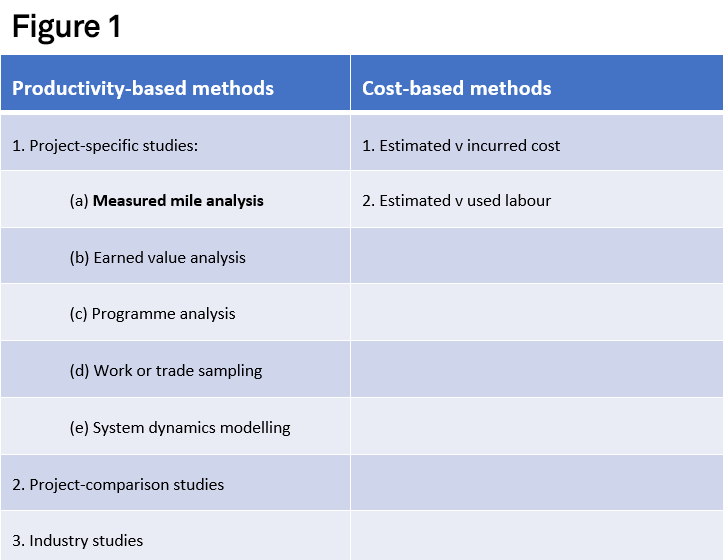
Richard Morris
Group Head of Expert Witness Services – Time

Group Head of Expert Witness Services – Time
‘Disruption’ and ‘delay’ are two terms that are regularly used in the same breath as they often flow from the same event. However, disruption, unlike delay, has a direct consequence on financial loss and a disruption analysis should therefore not be confined to events that are on the project’s critical path. But how do you demonstrate disruption?
This article is the second of a 2 part series written by Richard Morris. The first part, which explained disruption and compared it to delay, can be read here.
Disruption is usually lost productivity, i.e. an increase in the resources required to carry out a unit of works from the “baseline” levels.
It is essential to identify the cause (an event, events, or condition(s) that have led to the productivity loss), the entitlement (a clause in the contract or entitlement at law that gives the contractor the right to claim for loss and expense arising from the cause), deal with separation (where the productivity loss is distinguishable from productivity loss for which there is no entitlement for recovery) and finally the loss must be measured. There are two ways to do this:
Time
An activity should take 10hrs/m2 but it actually takes 15hrs/m2, hence the productivity is 10/15 = 66% (or a loss of 5hrs/m2); or

Cost
An activity should cost $10/m2 but it actually costs $15/m2, hence the productivity is 10/15 = 66% (or a loss of $5/m2).
There are several distinct methods for the calculation of lost productivity resulting from disruption events, each with varying accuracy and general acceptance. These are shown in Figure 1.


There is also a trade-off between the persuasiveness and ease of applying the methods, which is shown in Figure 2.
As noted in Section 18 of the SCL Protocol, with disruption claims:
“Compensation may be recovered for disruption only to the extent that the contract permits or there is an available cause of action at law. The objective of a disruption analysis is to demonstrate the loss of productivity and hence additional loss and expense over and above that which would have been incurred were it not for the disruption events for which the Employer is responsible.”
Hence, analytical methods and techniques should be used to establish the loss of productivity arising out of the disruption events and the resulting financial loss, rather than merely claiming the difference between what the contractor planned and what actually happened, i.e. the contractor must demonstrate the lost productivity and resultant loss has been incurred as a result of employer risk events only (i.e. excluding contractor risks).
This is generally based on the premise that:
The loss and expense during this period is usually claimed in man-hours although it is not incomprehensible that there will be additional costs in construction plant and possibly materials, but this is often more difficult to establish. During these periods a “standard” or “baseline” rate of production can be established, as shown in red in Figure 3.
Figure 4 shows an example where there were a series of identical power generation units under construction. A number of causes of disruption affecting Unit 3 were identified by the contractor [who kept excellent labour allocation records for its operatives], that had not affected Unit 2.
We were able to strip out from the allocation sheets the hours recovered through the contracted scope of works and for varied work reimbursed through “Dayworks” to ascertain the hours lost due to the causes of disruption noted.
To achieve be able to demonstrate disruption, it is vitally important to have accurate project records … and more records … and even more records including schedules (original and regularly updated), progress reports, correspondence, resource records (who, when, where and what) and cost records.
In the English case of Van Oord UK Ltd and another v Allseas UK Ltd (2015), the contemporaneous documents failed to credibly support the claims: the contemporaneous evidence made little reference to the standing time and disruption being claimed in the Court proceedings. This, coupled with the lateness of the claims being made, were factors undermining the credibility of the claims and the case was lost.
